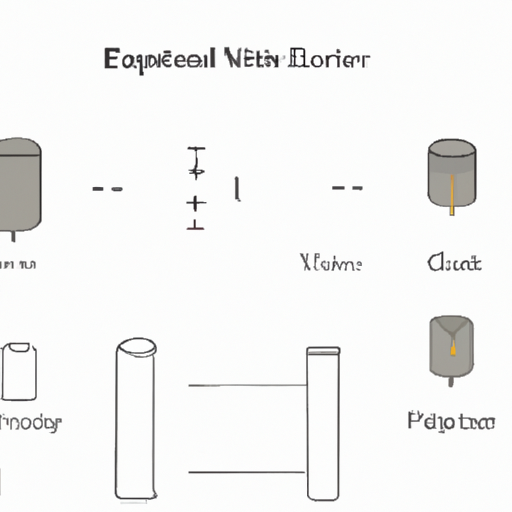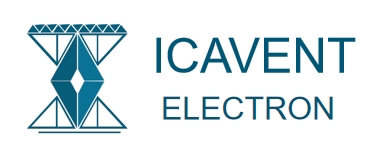What is the Working Principle of a 10kV Capacitor?

I. Introduction
Capacitors are fundamental components in electrical systems, serving as energy storage devices that can release energy when needed. They play a crucial role in various applications, from smoothing out voltage fluctuations in power supplies to enabling the operation of complex electronic circuits. Among the different types of capacitors, high-voltage capacitors, such as those rated at 10kV, are particularly important in industrial and power electronics applications. This article aims to explore the working principle of a 10kV capacitor, delving into its structure, operation, applications, and safety considerations.
II. Basic Concepts of Capacitance
A. Definition of Capacitance
Capacitance is the ability of a capacitor to store electrical charge. It is defined as the ratio of the electric charge (Q) stored on one plate of the capacitor to the voltage (V) across the plates.
B. Formula for Capacitance
The formula for capacitance is given by:
\[ C = \frac{Q}{V} \]
Where:
- \( C \) is the capacitance in Farads (F),
- \( Q \) is the charge in coulombs (C),
- \( V \) is the voltage in volts (V).
C. Units of Capacitance
Capacitance is measured in Farads, but in practical applications, it is often expressed in microfarads (µF), nanofarads (nF), or picofarads (pF) due to the large values involved.
D. Types of Capacitors
Capacitors come in various types, including ceramic, electrolytic, and film capacitors, each with unique characteristics suited for different applications. High-voltage capacitors, like the 10kV variety, are typically constructed from materials that can withstand significant electrical stress.
III. Structure of a 10kV Capacitor
A. Components of a Capacitor
A typical capacitor consists of three main components:
1. **Plates**: Conductive plates that store electrical charge.
2. **Dielectric Material**: An insulating material that separates the plates and increases the capacitor's ability to store charge.
3. **Terminals**: Connections that allow the capacitor to be integrated into a circuit.
B. Materials Used in 10kV Capacitors
1. Dielectric Materials
For 10kV capacitors, dielectric materials must have high dielectric strength to prevent breakdown under high voltage. Common materials include:
Polypropylene: Known for its excellent electrical properties and stability.
Polyester: Offers good insulation and is cost-effective.
2. Conductive Materials
The conductive plates are typically made from materials like aluminum or copper, chosen for their high conductivity and ability to handle high currents.
C. Design Considerations for High-Voltage Applications
Designing a 10kV capacitor involves careful consideration of factors such as dielectric thickness, plate area, and the overall geometry to ensure that the capacitor can operate safely and effectively under high voltage conditions.
IV. Working Principle of a 10kV Capacitor
A. Charging Process
The charging process of a 10kV capacitor begins when a voltage is applied across its terminals.
1. **Application of Voltage**: When a voltage source is connected, an electric field is established between the plates.
2. **Movement of Charge Carriers**: Electrons move from one plate to the other, creating a separation of charge.
3. **Formation of Electric Field**: This movement of charge generates an electric field within the dielectric material, which stores energy.
B. Energy Storage Mechanism
The energy stored in a capacitor is directly related to the voltage across it and the amount of charge it holds. The relationship is given by the formula:
\[ E = \frac{1}{2} C V^2 \]
Where:
- \( E \) is the energy stored in joules (J),
- \( C \) is the capacitance in Farads,
- \( V \) is the voltage in volts.
This equation illustrates that the energy stored increases with the square of the voltage, highlighting the importance of high-voltage capacitors in energy storage applications.
C. Discharging Process
When the capacitor is disconnected from the voltage source or connected to a load, it begins to discharge:
1. **Release of Stored Energy**: The stored energy is released as current flows from one plate to the other through the load.
2. **Current Flow and Its Implications**: The discharge current can be significant, depending on the load, and must be managed carefully to avoid damage to the capacitor or the circuit.
V. Applications of 10kV Capacitors
A. Power Electronics
10kV capacitors are widely used in power electronics, particularly in:
1. **Inverters and Converters**: They help in converting DC to AC and vice versa, smoothing out voltage fluctuations.
2. **Power Factor Correction**: Capacitors improve the power factor in electrical systems, enhancing efficiency.
B. Energy Storage Systems
In renewable energy systems, 10kV capacitors play a vital role in:
1. **Renewable Energy Integration**: They store energy generated from sources like solar and wind, releasing it when needed.
2. **Grid Stabilization**: Capacitors help maintain voltage levels and stability in the power grid.
C. Industrial Applications
In industrial settings, 10kV capacitors are used in:
1. **Motor Drives**: They provide the necessary power for starting and running electric motors.
2. **High-Voltage Power Supplies**: Capacitors are essential in supplying stable high-voltage power for various applications.
VI. Safety Considerations
A. Risks Associated with High-Voltage Capacitors
Working with 10kV capacitors poses significant risks, including electric shock and potential equipment damage if not handled properly.
B. Proper Handling and Installation Practices
To ensure safety, it is crucial to follow best practices during installation and maintenance, such as:
- Discharging capacitors before handling.
- Using insulated tools and protective gear.
C. Importance of Protective Equipment and Procedures
Employing protective equipment, such as gloves and goggles, and adhering to safety protocols can mitigate risks associated with high-voltage capacitors.
VII. Conclusion
In summary, the working principle of a 10kV capacitor involves the charging and discharging processes that allow it to store and release electrical energy effectively. Understanding the structure, operation, and applications of these capacitors is essential for anyone working in high-voltage environments. As technology advances, the role of capacitors in energy storage and power management will continue to grow, paving the way for innovative applications in the future.
VIII. References
1. Academic papers and textbooks on capacitor technology.
2. Industry standards and guidelines for high-voltage equipment.
3. Online resources and articles discussing the latest advancements in capacitor technology.
This comprehensive overview of 10kV capacitors highlights their importance in modern electrical systems and the need for careful handling and understanding of their principles.
What is the Working Principle of a 10kV Capacitor?

I. Introduction
Capacitors are fundamental components in electrical systems, serving as energy storage devices that can release energy when needed. They play a crucial role in various applications, from smoothing out voltage fluctuations in power supplies to enabling the operation of complex electronic circuits. Among the different types of capacitors, high-voltage capacitors, such as those rated at 10kV, are particularly important in industrial and power electronics applications. This article aims to explore the working principle of a 10kV capacitor, delving into its structure, operation, applications, and safety considerations.
II. Basic Concepts of Capacitance
A. Definition of Capacitance
Capacitance is the ability of a capacitor to store electrical charge. It is defined as the ratio of the electric charge (Q) stored on one plate of the capacitor to the voltage (V) across the plates.
B. Formula for Capacitance
The formula for capacitance is given by:
\[ C = \frac{Q}{V} \]
Where:
- \( C \) is the capacitance in Farads (F),
- \( Q \) is the charge in coulombs (C),
- \( V \) is the voltage in volts (V).
C. Units of Capacitance
Capacitance is measured in Farads, but in practical applications, it is often expressed in microfarads (µF), nanofarads (nF), or picofarads (pF) due to the large values involved.
D. Types of Capacitors
Capacitors come in various types, including ceramic, electrolytic, and film capacitors, each with unique characteristics suited for different applications. High-voltage capacitors, like the 10kV variety, are typically constructed from materials that can withstand significant electrical stress.
III. Structure of a 10kV Capacitor
A. Components of a Capacitor
A typical capacitor consists of three main components:
1. **Plates**: Conductive plates that store electrical charge.
2. **Dielectric Material**: An insulating material that separates the plates and increases the capacitor's ability to store charge.
3. **Terminals**: Connections that allow the capacitor to be integrated into a circuit.
B. Materials Used in 10kV Capacitors
1. Dielectric Materials
For 10kV capacitors, dielectric materials must have high dielectric strength to prevent breakdown under high voltage. Common materials include:
Polypropylene: Known for its excellent electrical properties and stability.
Polyester: Offers good insulation and is cost-effective.
2. Conductive Materials
The conductive plates are typically made from materials like aluminum or copper, chosen for their high conductivity and ability to handle high currents.
C. Design Considerations for High-Voltage Applications
Designing a 10kV capacitor involves careful consideration of factors such as dielectric thickness, plate area, and the overall geometry to ensure that the capacitor can operate safely and effectively under high voltage conditions.
IV. Working Principle of a 10kV Capacitor
A. Charging Process
The charging process of a 10kV capacitor begins when a voltage is applied across its terminals.
1. **Application of Voltage**: When a voltage source is connected, an electric field is established between the plates.
2. **Movement of Charge Carriers**: Electrons move from one plate to the other, creating a separation of charge.
3. **Formation of Electric Field**: This movement of charge generates an electric field within the dielectric material, which stores energy.
B. Energy Storage Mechanism
The energy stored in a capacitor is directly related to the voltage across it and the amount of charge it holds. The relationship is given by the formula:
\[ E = \frac{1}{2} C V^2 \]
Where:
- \( E \) is the energy stored in joules (J),
- \( C \) is the capacitance in Farads,
- \( V \) is the voltage in volts.
This equation illustrates that the energy stored increases with the square of the voltage, highlighting the importance of high-voltage capacitors in energy storage applications.
C. Discharging Process
When the capacitor is disconnected from the voltage source or connected to a load, it begins to discharge:
1. **Release of Stored Energy**: The stored energy is released as current flows from one plate to the other through the load.
2. **Current Flow and Its Implications**: The discharge current can be significant, depending on the load, and must be managed carefully to avoid damage to the capacitor or the circuit.
V. Applications of 10kV Capacitors
A. Power Electronics
10kV capacitors are widely used in power electronics, particularly in:
1. **Inverters and Converters**: They help in converting DC to AC and vice versa, smoothing out voltage fluctuations.
2. **Power Factor Correction**: Capacitors improve the power factor in electrical systems, enhancing efficiency.
B. Energy Storage Systems
In renewable energy systems, 10kV capacitors play a vital role in:
1. **Renewable Energy Integration**: They store energy generated from sources like solar and wind, releasing it when needed.
2. **Grid Stabilization**: Capacitors help maintain voltage levels and stability in the power grid.
C. Industrial Applications
In industrial settings, 10kV capacitors are used in:
1. **Motor Drives**: They provide the necessary power for starting and running electric motors.
2. **High-Voltage Power Supplies**: Capacitors are essential in supplying stable high-voltage power for various applications.
VI. Safety Considerations
A. Risks Associated with High-Voltage Capacitors
Working with 10kV capacitors poses significant risks, including electric shock and potential equipment damage if not handled properly.
B. Proper Handling and Installation Practices
To ensure safety, it is crucial to follow best practices during installation and maintenance, such as:
- Discharging capacitors before handling.
- Using insulated tools and protective gear.
C. Importance of Protective Equipment and Procedures
Employing protective equipment, such as gloves and goggles, and adhering to safety protocols can mitigate risks associated with high-voltage capacitors.
VII. Conclusion
In summary, the working principle of a 10kV capacitor involves the charging and discharging processes that allow it to store and release electrical energy effectively. Understanding the structure, operation, and applications of these capacitors is essential for anyone working in high-voltage environments. As technology advances, the role of capacitors in energy storage and power management will continue to grow, paving the way for innovative applications in the future.
VIII. References
1. Academic papers and textbooks on capacitor technology.
2. Industry standards and guidelines for high-voltage equipment.
3. Online resources and articles discussing the latest advancements in capacitor technology.
This comprehensive overview of 10kV capacitors highlights their importance in modern electrical systems and the need for careful handling and understanding of their principles.













